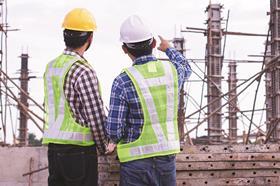Quarterly survey reveals uncertainties around the economy and Brexit

Growth in the £56bn construction products industry is expected to slow this year after the sector lost pace at the end of 2017.
This is according to the Construction Products Association’s (CPA’s) State of Trade Survey for Q4 2017, which showed activity is expected to weaken this year as inflation continues to rise, economic growth slows and the uncertainty surrounding the UK’s post-Brexit deal continues.
The survey revealed 6% of heavy side manufacturers, which includes aggregates, cement, ready-mix concrete, structural and reinforcing steel, reported a decrease in product sales in Q4, compared to 10% reporting a rise in the prior three month period – the first negative balance in nearly five years.
Sales on the light side, which includes non-structural and finishing products such as insulation, boilers, glass and lighting were reported higher by half of manufacturing firms.
No heavy side forms anticipated a rise in sales this year, decreasing from a balance of +28% in the previous quarter. On the light side, 10% of firms expect an increase in sales for 2018, compared to a balance of 33% in Q3.
Annual cost increases were reported by 87% of heavy side manufacturers and 80% on the light side, while raw material costs rose according to 87% of the former and 91% of the latter.
Rebecca Larkin, senior economist at the CPA, said: “The survey echoes other industry data that has shown the prolonged period of growth in construction activity since 2013 started to lose pace in the closing months of 2017.
“Of note are the signals of a leaner 2018 with heavy side expectations for sales growth at their lowest in five years, reflecting a backdrop of a slower economy, Brexit uncertainty and falling new orders in key sectors such as commercial offices.
“As well as weaker market conditions, it appears as though a further rise in costs will strengthen the headwinds facing industry. This illustrates the lagged pass-through of the 2016 Sterling depreciation and rising global commodity prices into input cost inflation that is still to filter down the construction supply chain.”




























No comments yet